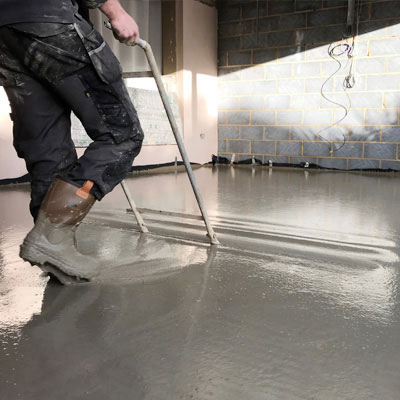5 Things You Want To Be Aware Of Your floor screed Prior To Repairing Your Floors

When your old floors are deprived of their floor covering, it is essential to make an exhaustive appraisal of the leftover substrate to ensure it is in a reasonable condition to take on the new flooring. A portion of the essential angles that should be taken a gander at prior to laying the new floor finish are:
1. Is the current floor screed sufficiently able to take on the new flooring?
While introducing another floor, the quality and appropriateness of the current floor screed ought to be evaluated satisfactorily to ensure they can be held for proceeded with administration. Begin by checking the floor screed for any separation, breaking, or twisting considering their possible impact on the new floor. However minor cracks can be fixed by sap infusions, further mediation may be essential for cracks or joints where adjustment is unimaginable.
On the off chance that the floor screed looks friable and powerless, it is prudent to do a BRE drop hammer test to measure assuming the floor screed is sound enough for the new overlay. Particularly in situations where the traffic volume of the new floor is assessed to expand, it is significant not to depend on the past agreeable execution of the floor alone, yet make a careful evaluation to decide its appropriateness for the new floor.
2. How level is the floor screed?
Surface routineness or the degree of evenness of the current floor screed reflects plainly through the last floor finish. As per British Standards, a typical exactness floor is possibly permitted a most extreme deviation of 5mm when estimated with a 2m straightedge resting in touch with the floor/floor screed.
On account of elevated expectation floors (SR1), the deviation should be restricted to 3mm, while for utility standard floors (SR3) it can go up to 10mm. Deviations higher than this can influence the functionality of the floor and can prompt speedier mileage, and in serious cases even posture trip perils. In the event that your floor base or floor screed doesn’t meet the prerequisite, further floor screeding/evening out will be essential that is equivalent to the thickness indicated for the new floor covering.
3. Toxins and dangerous material
Assuming the structure you are renovating was recently utilized for modern or research facility purposes there are chances that there could be deposits of substance toxins and destructive materials in the floor screed and floor bases. In such cases ensure the floor screed or floor base is surveyed for the presence of impurities and find fundamental ways to eliminate them prior to starting further work.
On account of non-modern structures, the pollutants that are probably going to be available are oils or materials, for example, dust proofers or sealers which were applied before to concrete wearing surfaces. These materials can influence the bond with the overlaid adhesives and new floor covering, and ought to be taken out or disconnected from the new flooring. Different materials that need consideration are buildups from magnesium oxychloride flooring (the chloride can cause erosion of steel reinforcement in concrete bases), asbestos and substance or natural pollutants from modern cycles or research facilities.
4. Dampness can mean something bad
Most floors laid over ground-bearing bases are constructed with a dampness hindrance to confine them from groundwater. With regards to repairing your floors, ensure the floors have a sufficient waterproofing framework, and in situations where a dampness obstruction is available, guarantee that it is all ready. Imperfections in dampness sealing could of the time go undetected assuming the floor finish utilized before was a permeable completion like stone, terrazzo, or artistic tile. However, assuming the flooring is supplanted with a dampness touchy floor finish, for example, vinyl, wood, or tile, the flooring can be in danger of likely disappointment.
In circumstances where there is any uncertainty about the viability of the dampness framework, it is vital to do encourage examination and screen the state of the base utilizing a dependable dampness content test. Where vital, the floor base ought to be detached from the remainder of the flooring by fusing a Damp Proof Membrane and a layer of floor screed in the middle.
Click here to find more about Spraying Plaster On Walls!
5. Time matters
Assuming your floors are needing another layer of floor screed, ensure you pick a floor screed that suits your venture course of events. A common conventional floor screed requires a decent drying season of 110 days before you can lay the floor finish. Laying the floor screed any sooner can prompt the leftover dampness being caught inside the floor screed, setting off significant flooring issues after you lay the floor finish. The dampness (and the antacid buildups it takes with it from the floor screed) can cause dampness delicate floor completions to de-bond because of mellowing of adhesives; cause clasping and taking off hardwood floors and soggy and shape issues in rugs.
Assuming you are on a tight timetable, it is ideal to go for an exclusive/changed floor screed that can take on the last floor finish in a couple of days to half a month. These floor screeds for the most part use water diminishing or plasticizing admixtures or unique cement to lessen the dry out time while further developing the floor screed strength and adequacy. Address your installer to help settle on a floor screeding framework that is reasonable for your undertaking and your spending plan.



